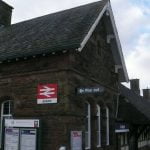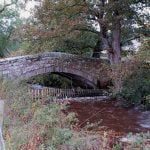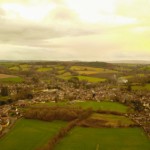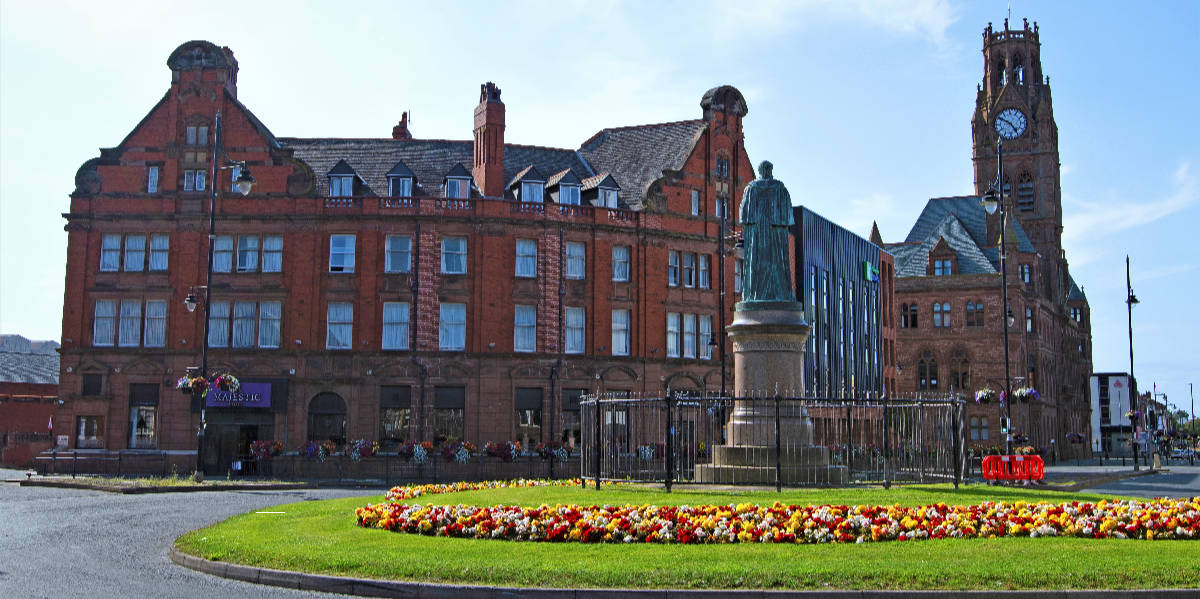
Barrow-in-Furness, commonly known as Barrow, a town and borough in the county of Cumbria, northwest England. Historically part of Lancashire, it was incorporated into the new county of Cumbria in the major local government reorganisation of 1974. Situated at the tip of the Furness peninsula, close to the Lake District, it is bordered by Morecambe Bay, the Duddon Estuary and the Irish Sea.
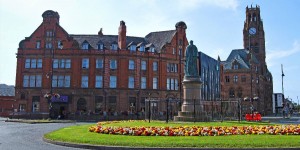
Image: Peter is Shaw 1991/Shutterstock.com
Go to the Cumbria Business Directory
A Fleeting History
There’s strong archaeological evidence to advocate that the Barrow area was originally settled during the Neolithic age, several millennia BC. However, unlike much of the rest of Cumbria, no evidence has yet been found to suggest the Romans were ever in the area. In 2011, a significant cache of Viking artefacts was found close to the town, providing significant evidence of 9th century Norse settlement. Local place names such as Yarlside, Ormsgill, Barrow and Furness, are all designations of Norse origin.
In the Middle Ages, Barrow was a small hamlet within the Parish of Dalton-in-Furness. The whole of the Furness peninsula was then very much under the jurisdiction of Cistercian monks who were resident at Furness Abbey. Soon after the founding of the Monastery in 1123, the monks were responsible for discovering iron ore deposits within the Barrow area. With the ore being found easy to extract, the proceeds from mining, along with agriculture and fisheries, meant that by the 15th century, Furness Abbey had become one of England’s most influential monasteries.
Piel Island
In 1327, the Abbot of Furness was given permission by Edward III, to fortify an old tower on nearby Piel Island, that had been originally built as a trading post by the Cistern monks. Piel Castle was to provide protection against Scottish raiders, which were prevalent at the time. Barrow itself at this time was just a hamlet in the parish of Dalton-in-Furness. In 1537, when Furness Abbey was dissolved, the castle became the property of Henry VIII but was left to fall into ruin.
In the 17th century, Rampside Hall was built in Barrow, along with several cottages and farmhouses at Newbarns. Then, in the late 18th century, a few more houses and a pub were built in the area. However, even as late as 1843, Barrow still only consisted of a total of 32 dwellings.
Barrow Joins The Rail Network
In 1839, Henry Schneider arrived in Barrow as a young entrepreneurial iron trader. He, along with other investors, founded Furness Railway. The first section opened in 1846, transporting iron ore and slate from local mines to a deep-water harbour near Roa Island. In 1850, Schneider, along with business partner Robert Hannay, discovered large deposits of local haematite. This encouraged them to establish the town’s first steelworks. In 1857, when the vital rail link between Ulverston and Lancaster was completed and promptly acquired by Furness Railway. In 1865, a Bessemer steel plant was established in the town. The following year it merged with Schneider and Hannay’s ironworks to form the Barrow Haematite Steel Company. By 1876, Barrow was home to the world’s largest steelworks.
Between 1863 and 1881, the town’s docks were built in a sheltered channel off Barrow Island, replacing the port at Roa Island. When the first phase of the harbour works, Devonshire Dock, was opened in 1867, the then Prime Minister, William Gladstone, was prompted to state his belief that “Barrow would become another Liverpool”. Barrow’s local economy had been transformed in the second half of the 19th century, with the coming of the railway, setting up of the steelworks and opening of the docks. The population of the hamlet of Barrow estimated at only 150 in 1843, reached 661 by 1850, then rocketed in the 1860s, to stand at 17,992 by 1871.
Ship Building
In 1871, with Barrow’s advantage of strategic location and the local availability of iron and steel, businessman, James Ramsden, decided to set up his ‘Iron Shipbuilding Company’ in the town. The company had early success, mainly focusing on building naval vessels and the related subsidiary activities. In 1897, Vickers & Sons, bought out the Barrow Shipbuilding Company (as it was then named) and its subsidiary, to form Vickers, Sons and Maxim. With the town’s shipbuilding success story, other major industries began to set up in the town, which included flax and jute works and chemical wood-pulp and paper works.
20th Century Barrow
With the arrival of WWI in 1914, the demand for warships kept Barrow’s shipyards busier than ever. Thus, both the town’s industrial output and the population peaked following the end of the war. In the 1921 census, the town’s population stood at 67,244. However, by this time, Barrow was starting to enter into a long period of decline, which resulted in the eventual exodus of major industries from the town. Conversely, with the advent of WW2, history was to repeat itself, as the town’s shipbuilding industry once again witnessed a revival due to the demand for naval vessels. And the success of the shipyard continued well after 1945 when the post-war ’tanker boom’ took place.
The Roaring 60s
From the 1960s Barrow shipyard began to specialise in submarine building, ensuring its survival. Other founding industries fared less well, as the ironworks closed in 1963; the steelworks in 1983; and the last remaining foundry in 1988. This had finally brought an end to Barrow’s iron and steel industry, leaving Barrow’s shipyard as the town’s principal industry.
With the ending of the Cold War in the early 1990s and a marked reduction in the demand for military ships and submarines, the town continued its decline. The shipyard’s dependency on military contracts meant it was particularly hard hit as government defence spending was dramatically reduced. As a result, the Vickers workforce shrank from 14,500 in 1990 to 5,800 in 1995, with overall unemployment in the town rising during that period from 4.6% to 10%.
This led to leading corporate thinking of the possibility of converting military-industrial production in declining shipbuilding areas to the offshore renewable energy sector. However, BAE Systems, the current owner of Barrow’s shipyard, remains operational as the UK’s largest supplier and maintainer of warships. A major expansion £300 million expansion associated with the new Dreadnought-class nuclear submarine programme is ongoing, although the whole issue remains politically sensitive.
The Modern Era
In 2006, the Barrow Offshore Wind Farm was constructed, which acted as a catalyst for further investment in offshore renewable energy. Today, Barrow is a hub for renewable energy generation operations. Offshore wind farms form one of the highest concentrations of turbines in the world, including the single largest with multiple operating bases located in the town.
Urban regeneration has been ongoing in Barrow since the 1990s. Portland Walk Shopping Centre opened in 1998 as part of a major reconstruction of Barrow town centre. A Retail Park and the Dock Museum have also been constructed on former industrial sites. A mix of recent construction projects in the town has totalled some £100 Million.
Additionally, several large-scale hotel projects have been built to cater for the influx of contractors working for BAE Systems. There is also Barrow Waterfront which is an ambitious ongoing £200 million dockland regeneration project, which began in 2007. The project includes a 400-berth marina, 650 homes, restaurants, shops, hotels and a new state of the art bridge across Cavendish Dock.
In the 2011 census, Barrow’s population was determined as 56,745, making it the second-largest settlement in Cumbria, after Carlisle.
Getting To Barrow
By Road
Barrow’s principal road link is the A590, which runs to Barrow from Junction 36 of the M6 motorway, via Ulverston, skirting the South Lakes. Just north of Barrow is the southern end of the A595, which links to both West and North Cumbria. The A5087 connects Barrow with Ulverston, via a scenic coastal route.
By Rail
Barrow-in-Furness connects to Whitehaven, Workington and Carlisle to the north, via the Cumbrian Coast Line. It is also connected to Ulverston, Grange-over-Sands and Lancaster to the east, via the Furness Line. Carlisle and Lancaster connect to West Coast Mainline to the north and south, respectfully. A number of trains run to/from Manchester on a daily basis, via Lancaster.
By Bus
Bus services within Barrow are operated by Stagecoach North West. There is currently no purpose-built bus station in the town, although most bus routes start/end near the town hall. In addition to the town and outlying village services, buses operated by Stagecoach and National Express run to Millom, Ulverston, Bowness, Windermere and Kendal to a regular timetable.
By Air
Manchester is the closest international airport, which has direct links to the towns railway station and about 2 hours drive by road.
Places to see In And Around Barrow!
The Dock Museum
The Dock Museum traces the social and industrial history of the town, from being a tiny hamlet in the 19th Century, to becoming the world’s biggest iron and steel centre and a major British shipbuilder.
Piel Castle and Island
Situated on the tip of the Furness Peninsula, Piel Island is a fifty-acre site, with a long and interesting history. The island hosts a variety of events throughout the summer. It has a castle (managed by English Heritage), a beach, camping facilities. and a pub. It even has a king, who by tradition, is the landlord of the pub, The Ship Inn. There are ferries to Piel Island in the summer, but it is possible to walk there at low tide, with the assistance of a guide.
Furness Abbey
The impressive remains of the 12th-century abbey include much of the east and west tower of the church, the ornately decorated chapter house and the cloister buildings. Originally of the Savigniac Order, it passed to the Cistercians in 1147. Despite numerous attacks and subsequent damage from Scottish raiders it still became one of the most prosperous abbeys in all of England.
An exhibition on the history of the abbey, with a quality display of elaborately carved stones, can be seen in the visitor centre. An audio tour is included in the admission price.
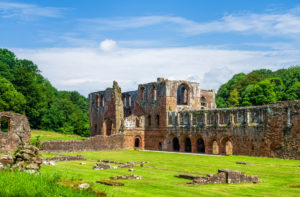
Image: Kevin Eaves/Shutterstock.com
Things to do In Barrow!
Bay Cycle Way
The Bay Cycle Way runs from Walney Island, Barrow-in-Furness to Glasson Dock, Lancashire. Its a relatively flat cycle route around Morecambe Bay. It is a family-friendly, long-distance route, suitable for all levels of touring cyclists. You can explore historic sites, visitor attractions, towns and villages along the 81 miles (130 km) route. There’s great scenery, an abundance of birdlife and plenty of eateries along the route. You can start the ride at either end, tackle the full route, or simply cycle part of the way. Participants usually cycle the full route in 2 to 4 days.
Dalton Safari Zoo
You can safari on foot and come face to face with and Rhinos, Lions, Tigers, Bears, Hippos, Wolves, Snow leopards, Jaguar, Giant otters, Primates, Vultures, Penguins and more at the UK’s most interactive animal park and Europe’s only Safari Zoo.
There are daily interactive animal keeper led talks and animal feedings. Kids entry is free.
South Walney Nature Reserve
One of the finest bird-watching sites in Cumbria, with wintering wading birds and wildfowl. There are also large numbers of migrant birds, including rare breeds in spring and autumn. Home to one of the largest gull colonies in Europe, also with large numbers of breeding Eider ducks. Also nationally important for its saline lagoons and coastal flora.
Sport In Barrow
Barrow A.F.C
If you happen to be in town on a Saturday afternoon and fancy watching a game of football, you could always pop along to the Holker Street stadium. It’s the home of Barrow A.F.C., who play in the English League Division 2. Home games are most usually played on alternate Saturdays between August and May.
Barrow Raiders
Barrow Raiders are a semi-professional rugby league team who compete in the Betfred Championship, the second tier of the European rugby league, behind the Super League. They play their home games at Craven Park. The rugby league season generally runs from February to July, with most home games played on alternate Sunday afternoons.
Where to stay?
Barrow is a great place to stay if you want to explore the South Lakes. It has a good range of accommodation to suit all tastes and pockets, with hotels, guesthouses, bed and breakfast, and holiday homes, all being available. A rough guide to costs in and around Barrow for the various accommodation types are as follows:
Guesthouse/B & B/Travel lodge: £40 – £60
Standard Hotels: £50 – £80
3 & 4 Star Hotels: £80 – £120
Holiday home: £60 – £90 PP per night for max. occupancy
Why Not Take The Barrow Quiz?
Quiz Maker – powered by Riddle
